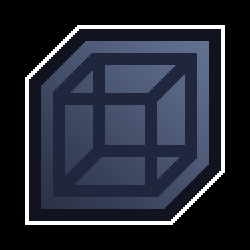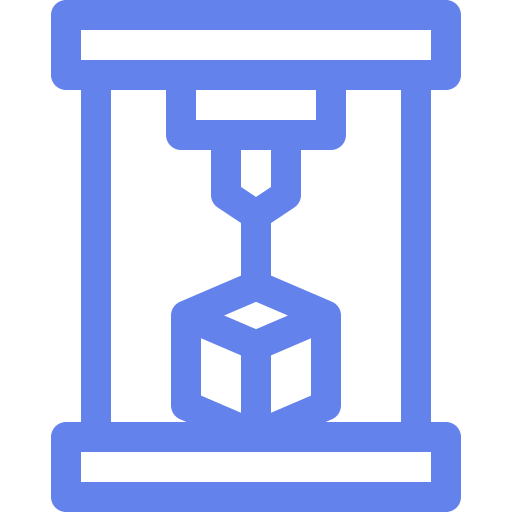Hey there, first post – hope it’s okay to put out a request for some advice. I just started 3D printing a few weeks ago (got an Ender 3 S1) and contrary to seemingly everyone else online, I’ve had no issues whatsoever with bed adhesion, rather the opposite.
Mostly to this point, I’ve been using ‘EconoFil’ PLA from filaments.ca (which was tricky to remove until I bought a better bed spatula-thing). Yesterday I got a roll of Overture ‘Eco-PLA’, which I’ve printed with a couple of times using organic supports, and both times has left a really stuck-on, almost chalky layer of filament on the bed. This isn’t so bad if I’m printing with the same filament afterward, but the Eco-PLA is ‘Midnight Black’ and I want to switch back to the Econofil for another model, which is ‘Bone White’ and I don’t want the bottom to get stained with the leftover Eco-PLA.
Has anyone had any similar issues? Any foolproof technique for removing stubborn, very thin layers?
–––
June 27 2023
As a bit of an update:
I realize my post was kind of unclear – the issue I was specifically trying to address was the stuck-on, ‘chalky’ layer of residue that was left by the Overture filament, not removing prints in general.
That said, it looks likely that my particular issue could be wet filament. I’d assumed that all brand-new filament (having arrived vacuum-sealed with desiccant) was going to be sufficiently dry. I tried using my bed as a DIY filament dryer and that yielded a bit of progress. My slightly-annoying workaround (until I have a better dryer) is to print a tiny 2-layer ‘sacrificial’ square to pick up any left-behind residue when switching to a lighter-coloured filament.
(Also, total fedi-sidenote: I was confused why multiple people were giving the exact same suggestion, but I think it’s a fediverse thing – not everyone is seeing all replies, I guess lol)

Chances are you are squishing too much first layer, so adjust that first. Then print over residue with slow speed and 5-10° hotter than usual settings. Residue should come off with print.
The first layer is already pretty dialed in, but this is the approach I ended up taking. Just generated a square in my slicer that was a few layers tall and printed that – if it happens again I’ll try using your suggestions of turning down the speed and turning up the temp though! Thanks :)

I clean my print surface with some isopropyl alcohol between prints and then wash the sheet every so often with warm water and dish soap. I use a satin textured sheet rather than a Pei one on my Mk3, most prints self release when cool but petg does leave some residue, IPA cleans that nicely. I did use a Pei sheet in the past which I used gluestick on, largely because I do a lot of printing with petg and the one time I said eh it’ll be fine I ripped a chunk of the surface off with the print, gluestick definitely works for a clean release, and I found I didn’t need to reapply every print.
For really stuck on stuff, like an early cancellation, I have a plastic scraper. Using that and flexing the sheet back and forth until I can get under a corner is enough to pop it off. Usually it’s the lead in purge that prusa slicer starts with that I need to do this with. A quick clean after than and it’s good for the next print.
Hm, good to know that the glue stick helps with getting a clean release. I figured it was only useful in cases where a lack of bed adhesion was the issue.

Maybe you are leveling the bed too close to the nozzle. Google some pictures of how a good first layer is supposed to look like and move the bed a little lower so that the first layer has good adhesion but isn’t forced into the bed.
Not my particular issue – first layer is dialed in pretty nicely and haven’t had the same issue with other filaments.

Are you letting the bed cool before removing? That can help a lot.
What type of bed do you have? If it’s a flexible one, just take it off the printer and flex it/peel it off.

I have with a specific PLA I use at work which has a lovely texture but leaves a chalky residue on my build plate. I’ve got a magnetic black bendy plate, not a PEI covered flex metal plate. I end up having to bend the plate to peel off prints. I will agree that glue stick is a good way to remove too sticky prints. I will throw the whole thing into a sink and run water on the plate. This dissolves the glue and releases the print. Just for context, the last print that got stuck was a 22cm pizza slice shaped print. That was murder to remove.

As a bed scraper, I use a putty knife that I’ve sharpened on one side (chisel grind, #4).
Before printing too-sticky materials (like TPU on my PEI bed), I put down a layer of glue stick. This is sticky enough for successful prints, but easily removed at the end of the print.

As an extra hint, if you have a sticky print don’t try to smash and stab the putty knife at it, instead grab a hammer/wrench/anything really and gently tap it under the print. It releases so, so much easier.

Best tip for PLA on PEI bed: let it cool down. The PEI bed releases the print once it gets down to room temperature. If you still have problems, you can use gluestick or sprayed glue as a separation layer.
I’m using the PC bed that comes with the S1 – thanks though. I may upgrade down the line.

Are you letting the print cool before taking it from the bed? Some beds won’t release it until the part is cooled down.

If it’s glass, you can try putting it in freezer for a few minutes, but overall this is a common issue. If it becomes too common for you, upgrading to a flex steel bed is pretty great.
